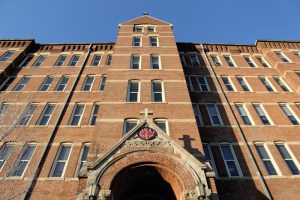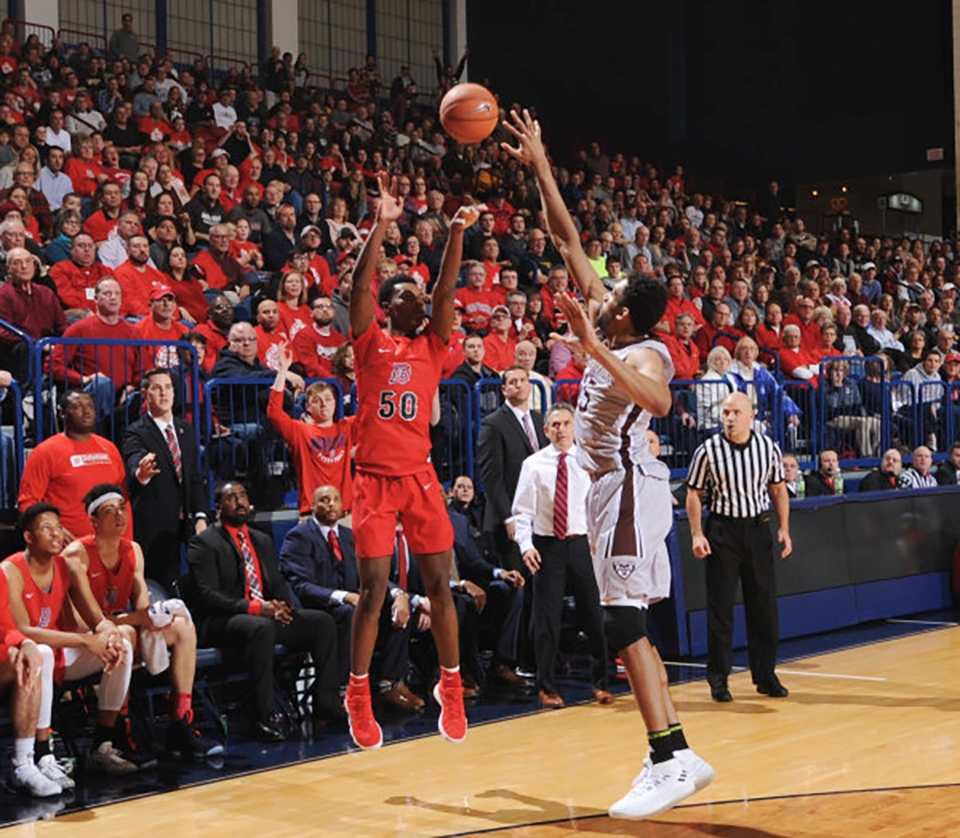

Duquesne University was recently voted to the U.S. News list of best colleges for value in the United States.
By Alison Caracciolo | Staff Columnist
I always told my parents I wanted to go to college in a different state, and it had to be noticeably larger than my high school. I wanted the big-city feel, but realistically, I just wanted the city feel without the out-of-state city price.
The first time I walked onto the Duquesne campus, I felt a sense of new opportunity. It was a city-within-a city.The small class size and the close relationships students had with professors appealed to me. Being more than a number was another factor that was important when I was going through the college search, and living around future career opportunities is what ultimately drew me to attend Duquesne.
Duquesne University has something else for students to brag about among its peers: It has been ranked No. 124, among 1,374 colleges and universities, in the “Best National Universities” list in the U.S. News and World Report’s Best Colleges annual ranking. Duquesne has also jumped up in the “Best Value School” ranking, climbing to No. 37, which is a six-spot increase when compared to last year.
U.S. News and World Report publishes a list every year of colleges and universities that have exceeded the measures of academic excellence, financial availability, graduation rates and many other factors. An extensive process of research is put into defining the best national or regional colleges and universities. The list can be a helpful guide to both students and parents when it comes to finding the best education that will inevitably be a lifetime investment.
The vast selection of college and universities can be a daunting experience for high school seniors. Many factors play a role in deciding which college or university that will be the perfect match. According to U.S. News, the spotlighted main features that are considered in the ranking of Best Colleges are first-year student retention rates, graduation rates and the strength of the faculty. Academic offerings, cost and available financial aid are other features that play a role in the ranking. With these factors displayed on the list of schools, it can help narrow the vast search to overwhelmed high school seniors.
U.S. News uses quantitative data that measures the academic quality of each school, where education experts tell which is a reliable academic indicator of what matters the most in an education. Then the schools are divided into national universities, national liberal arts universities, regional universities and regional colleges. They are further divided by other indicators of superior academic offerings, and each indicator is given a weight of excellence; U.S. News then makes a judgement of which indicator matters the most.
The Carnegie classification is a system that U.S. News uses as its basis in ranking colleges and universities. This system helps identify which schools are eligible for grant money.This means schools that may have been regional universities may now be national universities. A new methodology was implemented when making the 2017 list, where class size plays a larger role in the ranking for each school. Schools with smaller class sizes are always weighted higher than schools with larger class sizes, according to U.S. News.
Duquesne students have an advantage that many may overlook when it comes to class size. The average ratio for students to faculty is 14:1, and according to U.S. News statistics, 51.8 percent of classes at Duquesne have a class size between 20-49. Students at Duquesne are receiving an education where many of the professors know them by name. Students are more likely to further their education and graduate when they feel they have a close network with their professors, according to U.S. News.
The school’s selectivity may seem like a minor factor in the rankings, but it actually plays a significant role in where each school is placed in the rankings. The more selective the school, the higher its educational value.
For example, Princeton University is ranked No. 1 as “Best National University,” primarily for its seven percent acceptance rate, esteemed graduate programs, small class sizes, and 100 percent financial need met on average. Duquesne University has a 75 percent acceptance rate where the average financial need met is 73 percent, according to U.S. News.
The fact that Duquesne University placed on the Best Colleges ranking is something for Duquesne students to take pride in.
Ally Parisi, a sophomore at Duquesne, said, “We have our own little campus community while being just a step away from booming opportunity … Duquesne sets us up for success in our future.”
The location and the high academic reputation of Duquesne University is what sold Parsis, and myself, into attending Duquesne. Its students are receiving one of the nation’s top ranked educations, which inevitably comes with its own set of bragging rights. Even employers who have interviewed me recognized Duquesne for its high academic reputation.
Being an undergraduate or graduate student at a nationally ranked university is certainly something to talk about.




